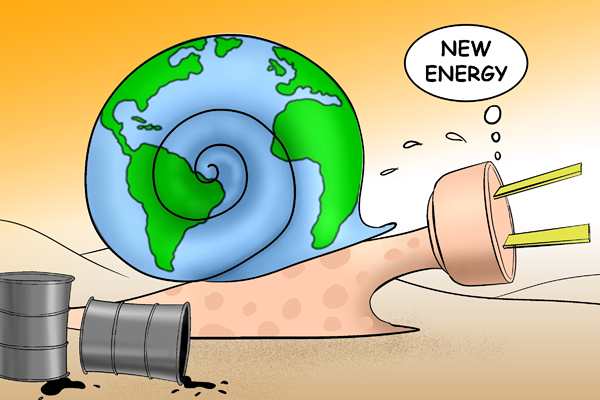Air pollution a result of distorted economic structure
china.org.cn / chinagate.cn by Ma Jun, January 19, 2015 Adjust font size:
The current economic structure, energy structure and transport structure (hereafter collectively referred to as economic structure) are an important factor leading to the current severe pollution in China. At least three factors have led to the high-polluting economic structure - a market distorted by the government, a malfunctioning market, and the lack of social responsibility in the corporate sector and among consumers.
|
At a snail's pace [By Jiao Haiyang/China.org.cn] |
The market mechanism was supposed to form an optimal economic structure, along with a corresponding pattern of resource allocation, which would be good at improving the environment. But government intervention has distorted the market's intrinsic function, which in turn has led to high pollution.
At the same time, the market itself is unable to correct over-investment, production or consumption. That is why the government should design mechanisms to contain it. However, so far, the government has failed to do so.
The corporate sector and consumers both lack social responsibility to care for the environment protection. This is why the production and consumption of green products has not risen visibly in recent years.
1. Correcting the distorted market
Due to the external economic environment and economic cycles, the government once blindly sought high-export growth in order to boost employment and economic recovery. Local government heads also focused excessively on GDP figures to make their performance sheets look good. But boosting GDP is best done by accelerating growth in the real estate and manufacturing sectors, as a result of massive investment. The same pursuit has resulted in unreasonably favorable policies to the secondary industry, at the cost of suppressing the low-polluting modern service industry.
